The basic computer system and its devices will be discussed in this post on basic computer skills. For people who are beginners in the realm of computers, this post will be very helpful.
We’ll discuss and cover the following topics. Visit “BasicComputer Course Lesson 1” on our YouTube Channel.
- Introduction to computer system
- Uses of computers
- Characteristics of computer
1. Introduction to Computer System
The computer is revolutionizing the methods by which we communicate, operate a business, and learn about various academic disciplines. Nowadays, knowledge is more widely available because of advances in computer technology.
What is a computer?
The “Computer” is derived from the Latin word “Compute”, which means to calculate. So a computer is normally considered to be a calculating device that can perform arithmetic and logical operations at a very fast speed.
OR
A computer is an electronic machine that can accept data, process it, and give results, after that processing.
Other definitions of Computer:
A computer is an electronic machine that solves our problems.
OR
A computer is an electronic machine that converts data into information.

Data
Data are basic values or facts. A computer uses many different types of data stored in digital formats,
such as text, numbers, and multimedia.
Information
When information is entered into and stored in a computer, it is generally referred to as data.
Part of computer
A Computer has four parts.
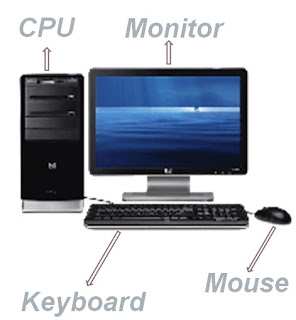
- CPU
- Monitor
- Keyboard
- Mouse
CPU (Central Processing Unit)
A box that contains different electronic components of the computer used to process data. There are two cases of the system unit, the first tower case, and the second desktop case. It includes the motherboard, processor (CPU), RAM, hard drive, module cards, ports, power supply, and connectors.
The Central Processing Unit is abbreviated as CPU. It is sometimes referred to as a microprocessor or processor. It is simply the brain of the computer. It carries out the instructions of a computer program by performing the basic arithmetic, logical control, and input/output (I/O) operations.
System Unit Organization Chart
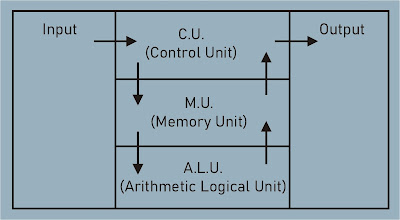
Parts of the Systems Unit
There are many parts of the system unit, which are the following:
- Motherboard
- Microprocessor
- RAM
- ROM
- Cache Memory
- Storage Devices
Motherboard
It is also called the main board, or system board. It is the most important component of a unit system. If it doesn’t work properly, your system is a useless machine.
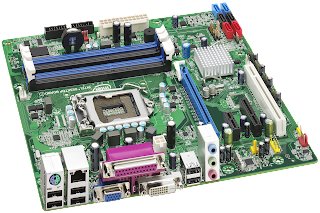
Each component of the system unit connects directly to the motherboard.
Microprocessor
It is also known as CPU (Central Processing Unit) or processor. It is simply the brain of the computer. It carries out the instructions of a computer program by performing the basic arithmetic, logical control, and input/output (I/O) operations.
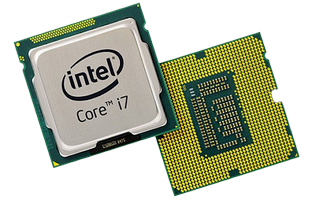
RAM
RAM stands for Random Access Memory. It is the type of main or primary memory. It is a temporary storage area to hold the data and instructions that the Central Processing Unit (CPU) needs.
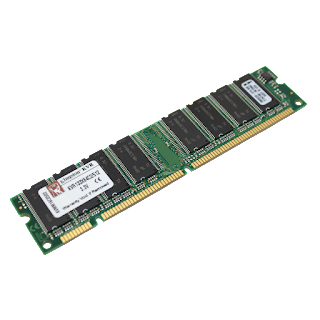
Each program is loaded into memory to run. This allows the CPU direct access to the program. This is of a volatile nature. DRAM, SRAM & MRAM are its three types.
ROM
ROM stands for Read Only Memory. It is a non-volatile memory because ROM retains its contents even when the computer is turned off. Instructions on a ROM can neither be selected nor changed.
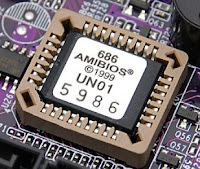
It prepares a computer for use by telling how to access the hard disk and find and load the operating system. ROM has three types PROM, EPROM, and EEPROM. It is also called BIOS (Basic Input Output System).
Cache Memory
This relatively new type of memory is expensive, faster, and smaller memory than RAM. It resides within or near the CPU. It holds recently or frequently used instructions.
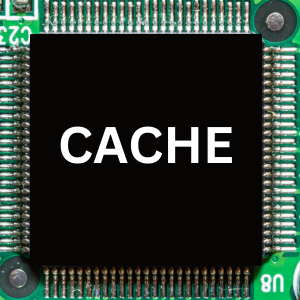
It is used to enhance the speed of the computer by reducing the transfer time of data with the CPU.
Storage Devices
These are non-volatile in nature. These devices are used to store data, instructions, and information permanently. Important examples of storage are hard disk, optical disk, USB Flash Drive, Floppy disk, and, Zip disk.
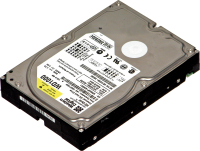
For more detail on Storage Devices review our post “Computer Hardware and Software“.
Monitor
The monitor, also known as the display or screen, is an essential component of a computer system, serving as the primary output device. Its role is to visually present the information and graphics generated by the computer’s hardware and software to the user in a readable and comprehensible format. Monitors come in various sizes, resolutions, and types, offering users a range of options to suit their specific needs and preferences.
One of the key characteristics of a monitor is its resolution, which refers to the number of pixels displayed horizontally and vertically on the screen. Higher resolutions result in sharper and more detailed images, making it easier to view fine details and text. Common resolutions include Full HD (1920×1080 pixels), Quad HD (2560×1440 pixels), and Ultra HD or 4K (3840×2160 pixels), with higher resolutions becoming increasingly popular for tasks such as gaming, multimedia editing, and graphic design.
Another important factor to consider when choosing a monitor is its refresh rate, which represents the number of times per second the monitor updates with new images. Refresh rate is measured in Hertz (Hz), with higher values resulting in smoother motion and reduced motion blur, particularly beneficial for gaming and fast-paced multimedia content. While traditional monitors typically feature refresh rates of 60Hz, gaming monitors often offer higher refresh rates such as 120Hz, 144Hz, or even 240Hz for a more responsive and immersive gaming experience.
Monitors utilize different display technologies, including LCD (Liquid Crystal Display), LED (Light Emitting Diode), and OLED (Organic Light Emitting Diode), each with its own set of advantages and limitations. LCD monitors, the most common type, use liquid crystal cells illuminated by a backlight to produce images. LED monitors are a type of LCD monitor that use light-emitting diodes (LEDs) as the backlight source, offering improved energy efficiency and thinner designs. OLED monitors, on the other hand, utilize organic compounds that emit light when an electric current is applied, providing deeper blacks, higher contrast ratios, and wider viewing angles compared to traditional LCD displays.
Additional features and functionalities may vary depending on the monitor model and manufacturer. These may include adjustable stands for ergonomic positioning, built-in speakers or audio outputs for multimedia playback, and a variety of connectivity options such as HDMI, DisplayPort, and USB-C for seamless integration with other devices. Some monitors also offer advanced features like HDR (High Dynamic Range) support for enhanced color and contrast, curved screens for improved immersion, and built-in calibration tools for accurate color reproduction.
In summary, the monitor plays a crucial role in the overall computing experience, providing users with a visual interface to interact with their computer systems. By considering factors such as resolution, refresh rate, display technology, and additional features, users can select a monitor that meets their requirements and enhances their productivity, entertainment, and overall enjoyment of computing activities.
Monitor Types
Monitors come in various types, each offering different features, advantages, and use cases. Here are some common types of monitors:
LCD (Liquid Crystal Display) Monitors:
- LCD monitors are the most common type, widely used for general computing tasks, office work, and multimedia consumption.
- They utilize liquid crystal cells arranged in a grid and illuminated by a backlight to produce images.
- LCD monitors offer good color accuracy, sharpness, and brightness levels, making them suitable for everyday use.
- These monitors are available in different resolutions, sizes, and aspect ratios to accommodate diverse user preferences and requirements.
LED (Light Emitting Diode) Monitors:
- LED monitors are a type of LCD monitor that uses light-emitting diodes (LEDs) as the backlight source instead of traditional cold cathode fluorescent lamps (CCFLs).
- LED backlighting offers several advantages, including improved energy efficiency, thinner designs, and better contrast ratios.
- LED monitors are known for their bright and vibrant displays, making them ideal for gaming, multimedia editing, and graphic design applications.
- They come in various configurations such as edge-lit and direct-lit LEDs, each with its own set of benefits in terms of brightness distribution and power consumption.
OLED (Organic Light Emitting Diode) Monitors:
- OLED monitors utilize organic compounds that emit light when an electric current is applied, eliminating the need for a separate backlight.
- OLED technology offers several advantages over traditional LCD/LED displays, including deeper blacks, higher contrast ratios, and wider viewing angles.
- These monitors provide superior color accuracy, saturation, and response times, resulting in an immersive viewing experience.
- OLED monitors are particularly well-suited for applications where color accuracy and image quality are critical, such as professional photo and video editing, as well as for entertainment purposes like watching movies and playing games.
Curved Monitors:
- Curved monitors feature a gently curved screen that wraps around the viewer, creating a more immersive viewing experience.
- The curvature of the screen helps reduce distortion and eye strain by providing a more uniform viewing distance from the center to the edges.
- Curved monitors are popular among gamers and multimedia enthusiasts seeking a more immersive gaming and entertainment experience.
- They often feature ultra-wide aspect ratios and high refresh rates, making them suitable for multitasking, gaming, and content creation.
Touchscreen Monitors:
- Touchscreen monitors feature a touch-sensitive display that allows users to interact with the computer directly by tapping, swiping, or dragging their fingers on the screen.
- These monitors are commonly used in applications such as kiosks, interactive digital signage, point-of-sale systems, and collaborative work environments.
- Touchscreen monitors come in various form factors, including standalone displays, all-in-one PCs, and interactive whiteboards, catering to different usage scenarios and requirements.
Each type of monitor offers unique features and benefits, allowing users to choose the one that best suits their specific needs, preferences, and budget. Whether for everyday computing tasks, gaming, multimedia editing, or professional applications, there is a wide range of monitor options available to cater to diverse requirements.
Key Board
The keyboard is a fundamental input device for computers, allowing users to enter text, commands, and other data into the system. It consists of a set of keys arranged in a specific layout, typically including alphanumeric keys, function keys, navigation keys (such as arrow keys), and special keys like Ctrl, Alt, and the Windows key. The layout of the keyboard varies depending on regional and language preferences, with the QWERTY layout being the most common in English-speaking countries.
Keyboards can be either wired or wireless, offering users flexibility in terms of connectivity options. Wired keyboards connect to the computer via USB or PS/2 ports, providing a reliable and low-latency connection. Wireless keyboards, on the other hand, use radio frequency (RF) or Bluetooth technology to communicate with the computer, allowing for greater freedom of movement and a clutter-free workspace.
Professionals and enthusiasts alike are using mechanical keyboards more often because of their customizable features, robust construction, and tactile feedback. These keyboards use individual mechanical switches for each key, providing a satisfying tactile feel and audible click with each press. Different types of switches, such as Cherry MX, Razer, and Logitech Romer-G, offer varying actuation forces and tactile feedback to suit different typing preferences.
Membrane keyboards, on the other hand, use a rubber dome beneath the keys to provide input. While they are generally less expensive and quieter than mechanical keyboards, they may lack the tactile feedback and durability of mechanical switches. Membrane keyboards are commonly found in budget-friendly and mainstream computer systems.
Keyboards may feature additional functionalities and ergonomic designs to enhance user experience and comfort during prolonged typing sessions. Backlit keyboards, for example, feature illuminated keys that make it easier to type in low-light conditions. Some keyboards offer customizable macros, allowing users to program complex sequences of keystrokes for increased productivity. Ergonomic keyboards are designed with a curved or split layout to reduce strain on the wrists and hands, promoting a more natural and comfortable typing posture.
In summary, the keyboard is an essential input device that facilitates communication between users and computers. With a variety of types, layouts, and features available, users can choose a keyboard that meets their specific needs and preferences, whether for everyday typing, gaming, programming, or professional use.
Mouse
The mouse is a critical input device used to control the cursor on a computer screen and interact with graphical user interfaces. It typically consists of two buttons (left and right) and a scroll wheel, though modern mice may include additional buttons for enhanced functionality. By moving the mouse across a flat surface, users can manipulate the cursor’s position and perform various actions such as clicking, dragging, and scrolling.
There are several types of mice available, each offering unique features and advantages tailored to different use cases:
Optical Mouse:
- Optical mice use LED lights and photodiodes to detect movement, capturing images of the surface beneath the mouse and translating them into cursor movement on the screen.
- These mice are suitable for use on a variety of surfaces, including mouse pads, desks, and even some fabrics, providing smooth and accurate tracking.
Laser Mouse:
- Laser mice utilize laser diodes instead of LEDs for illumination, offering increased precision and sensitivity compared to optical mice.
- Laser mice can track movement on a wider range of surfaces, including glossy or textured surfaces, making them versatile options for different environments and applications.
Wireless Mouse:
- Wireless mice communicate with the computer via radio frequency (RF) or Bluetooth technology, eliminating the need for a physical connection.
- RF wireless mice typically come with a USB receiver that plugs into the computer, providing a reliable and low-latency connection.
- Bluetooth mice connect directly to the computer’s built-in Bluetooth receiver, offering greater convenience and compatibility with devices that support Bluetooth connectivity.
Gaming Mouse:
- Gaming mice are designed with features optimized for gaming performance, including high DPI (dots per inch) sensitivity, customizable buttons, and ergonomic designs.
- These mice often feature adjustable DPI settings, allowing users to fine-tune the sensitivity of the cursor for precise aiming and rapid cursor movement in games.
- Gaming mice may also include programmable buttons that can be customized to perform specific in-game actions or macros, enhancing gameplay efficiency.
Trackball Mouse:
Trackball mice feature a stationary ball on the top of the mouse, which users manipulate with their fingers or thumbs to control the cursor.
Unlike traditional mice, which require movement across a surface, trackball mice allow for cursor movement without physically moving the mouse itself, making them suitable for limited desk space or ergonomic considerations.
Vertical Mouse:
Vertical mice have an ergonomic design that positions the hand in a handshake-like grip, reducing strain on the wrist and forearm during prolonged use.
These mice promote a more natural hand position, potentially alleviating discomfort associated with repetitive strain injuries such as carpal tunnel syndrome.
Each type of mouse offers unique features and benefits, allowing users to choose the one that best suits their preferences, ergonomic needs, and intended use cases. Whether for everyday productivity, gaming, graphic design, or specialized applications, there is a wide range of mouse options available to cater to diverse user requirements.
2. Uses of Computer
The computer is playing a very important role in every field of life. Computers are everywhere such as at home, and at school. In daily life, a large number of activities are dependent on computers. The main fields where the computer is playing a very important role are:
Government
A government runs the country by making policies and providing citizens with up-to-date information. The
computers used in all government departments have their own websites. The computers are used in all government offices to perform various activities. Government agencies use computers as part of their daily routine.
Education
Education is the process of developing knowledge through instructions. The instruction is received from
people such as parents, teachers, etc., and from printed material such as books journals, etc. Today, the modern technology to get knowledge is by using computers.
Agriculture
In the agriculture field also, the computer is playing a very important role. Agriculture scientists use a computer to analyze agricultural data. The students of agriculture also use a computer to get the latest information about agriculture on the Internet. The farmers also use computers to get information about crops and calculate bills
and costs per acre as well as to get information about crops’ market prices.
Industry
In industry, computers are used to control the manufacturing system and the continuous running of the
machinery. Computers also help in monitoring temperature, and pressure, checking the quality and accuracy, and measurement needed in the manufacturing process.
Publishing
In the field of publishing, the computer plays a very important role such as publishing books, magazines, newspapers, etc. Publishers use computer and word processors and graphics software to design pages for books or magazines. Many writers and publishers use the internet to collect information that is used for compiling a new
book or magazine. Some websites allow you to download an entire book, called an electronic book (e-book). The journalists also use notebook computers and digital cameras to capture and record news.
Entertainment
The computer has also played a very important role in the entertainment of humans. The computer has become needed by humans for entertainment at their home. For example, to play video games at home, different game software is available to play games. Similarly, the software is available to see movies and enjoy music. Today movie files and famous songs are mostly available on CDs & DVDs or on the web at a very low cost. You can listen to music while you work on the computer.
E-Commerce
E-commerce, (Electronic Commerce), e-trade, or e-business is a financial business transaction conducted
electronically between business partners over a computer network (such as on the Internet). With e-commerce, transactions can occur instantaneously and globally. This saves time for participants or both ends. The users can buy,
sell, and exchange products or services via a computer network. Today, many mobile computers can also access the internet using wireless links.
Banking
One of the most popular uses of e-commerce is electronic banking. Electronic banking is also known as
cyber-banking. It includes various banking activities conducted from home, a business, or on the road instead of a physical bank location. All over the world, about 99 percent of banks are online.
Diagnosis of Diseases
The computer is also used in hospitals for diagnoses. For example, laboratory tests on blood and tissue
chemistry have become dependent on computer analysis. The physicians and dentists also use the computer-aided learning (CAL) program. Many websites also provide up-to-date medical, fitness, etc. information. These websites also maintain databases about various problems and their solutions. There are also medical chat rooms on the internet.
Traveling
The computer is also playing a very important role in traveling by car or airplane to arrive easily and safely at
your destination. Today many vehicles manufactured use special electronic equipment in the car that controls various activities of the car. These cars have a GPS (Global Positioning System) receiver that reports your vehicle location. These cars also have “Onboard Navigation Systems” that have the following features.
- Track the vehicle if it is stolen
- Provide emergency services
- Provide directions
- Provide roadside assistance
- Perform remote diagnostics if a warning light appears on the dashboard
- To make hotel and restaurant reservations
Today many vehicles also include options such as screens with e-mail and internet access, printers, fax
capability, etc. Airlines also provide online access. The passengers can connect their notebook or handheld computer to the web during their flights. Some airlines also provide web surfing devices to their passenger during their
flights.
The computer is also used in cars to monitor fluid levels, temperatures, electrical systems, etc. It is also used
to monitor air traffic etc.
Mathematical Calculations
A computer has a speed of calculating millions of calculations per second. We can perform large
mathematical calculations in a very short time.
3. Characteristics of Computer
Nowadays the computer is playing the main role in everyday life it has become the need of people just like
television, telephone, or other electronic devices at home. It solves human problems very quickly as well as accurately. The important characteristics of a computer are described below:
Speed
The computer is a very high-speed electronic device. The operations on the data inside the computer are performed
through electronic circuits according to the given instructions. The data and instructions flow along these circuits at a high speed that is close to the speed of light. Computers can perform millions of billion operations on data in one second. The computer generates signals during the operations process, therefore, the speed of a computer is usually measured in Mega Hertz (MHz) Giga Hertz (GHz).
Accuracy
In addition to being a very fast computer is also a very accurate device. It gives accurate output results provided
that the correct input data and set of instructions are given to the computer.
It means that output is totally dependent on the given instruction and input data. If input data is incorrect then the resulting output will be incorrect. In computer terminology, it is known as garbage-in garbage-out.
Storage
A computer has internal storage (memory) as well as external or secondary storage. In secondary storage, a large
amount of data and programs can be stored for future use. The stored data and programs are available at any time for processing. Similarly, information downloaded from the internet can be saved on the storage media.
Efficiency
Efficiency is one of the most wonderful things about computers. The computer can perform multiple tasks
simultaneously. For example preparation of the result of the examination, communication on the network storage and retrieval of information, etc.
Automation
A computer can automatically perform operations without interference from the user during the operations. It
controls automatically different devices attached to the computer. It executes automatically the program instructions one by one.
Consistency
People often have difficulty repeating their instructions again and again. For example, a lecturer feels difficulty in repeating some lecture in a classroom again and again.
The computer can repeat actions consistently (again and again) without losing its concentration:
- To run a spell checker (built into a word processor) for checking spelling in a document.
- To play multimedia animations for training purposes.
- To deliver a lecture through a computer in a classroom etc.
A computer will carry out the activity, in the same way, every time. You can listen to a lecture are perform any
action again and again.
Reliability
The electronic components in modern computers have a very low failure rate. The modern computer can perform
very complicated calculations without creating any problems and produces consistent (reliable) results. In general, computers are very reliable. Many personal computers have never needed a service call. Communications are also
very reliable and generally available whenever needed.
Conclusion
We have created this post for the newbies who are new to the computer field. It is designed to develop basic
computer skills to enhance your knowledge. Also, you can review our post on Computer Hardware and Software. If there is any kind of lack in this post or if liked it, please comment to us. Thanks.

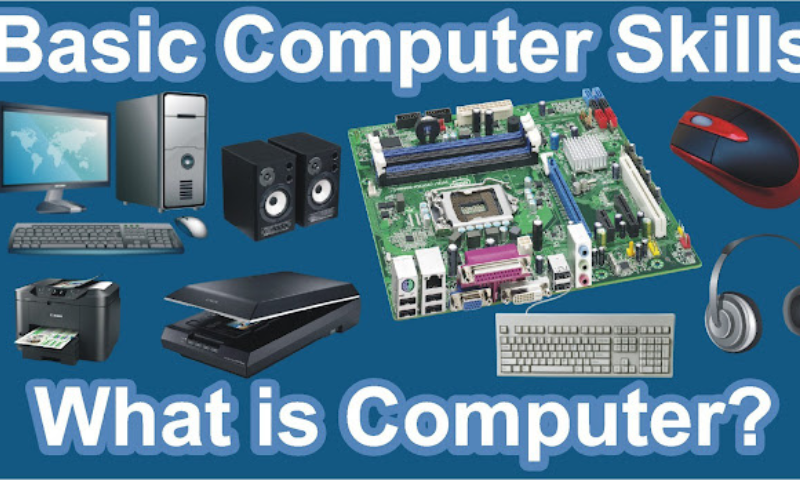


.jpg)


